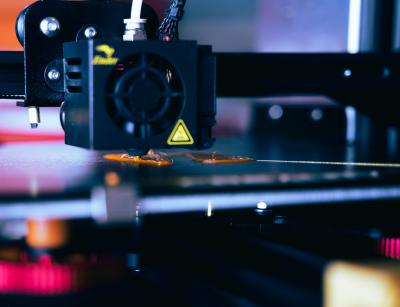Science, Art, and 3D Printing.

Most newcomers to 3D printing will quickly become acquainted with Thingiverse for most of their 3D printing files, and with good reason. Thingiverse, Pinshape and Myminifactory all feature robust 3D model collections, either free or for a small fee. These content providers are open to all contributors, and every day fresh content is uploaded and shared with the 3D printing world. The “open source” nature of the 3D printing market ensures an abundance of content, and users might be hard pressed to find a reason to look anywhere else for printable models. Today I would like to take you through a list of 3D collections offered by various STEM (Science, Technology, Engineering and Mathematics) and educational institutions and explain what sets them apart from the “.com” crowd. By embracing 3D printing technology, these collections show how this new technology can revolutionize how we learn about the world around us, and how we spread that knowledge to others.
Smithsonian 3D Digitization - https://3d.si.edu/
Museums have come to embrace the internet as a way of bringing their collections into your home and classroom. Even now, many museums are sharing their collections through virtual tours. The Smithsonian Museum is taking this concept to the next level by offering 3D scans of portions of their collection. This includes printable STL and OBJ files of items like Blumbach, the wooly mammoth skeleton and Neil Armstrong’s spacesuit! Not all of the 3D models are available for download, and some files are WAY bigger than you may expect, so it might take some digging to separate the printable material from the rest.
e-NABLE - http://enablingthefuture.org/
e-NABLE would like you to know it’s not just a website. Nor is it just a database for 3D designs. e-NABLE is best described as a “movement” of volunteers, designers and crafters with a common goal” producing and distributing upper limb prosthetics (hands). e-NABLE started modestly enough as a collaboration between a costume designer in the United States and a construction worker in South Africa. Ivan Owen had designed a mechanical puppet hand for a steampunk convention and posted a video online showing his work. This caught the attention of Richard, a construction worker, who reached out to Ivan about designing a prosthetic for his own hand. As they worked together, their collaboration brought on more and more participants, and the e-NABLE movement was founded.
The e-NABLE website will guide the user through which prosthetic best suits their needs, link them to the STL files (which are actually hosted by Thingiverse!) and provide instructions for assembly. The e-NABLE website also functions as a hub for designers, makers and recipients to connect and collaborate.
NIH 3D Print Exchange - https://3dprint.nih.gov/
The 3D print exchange run by the National Institutes of Health (NIH), is a collection of 3D printable models related to bioscientific research and medicine. Here you will find 3d printable replicas of proteins, viruses, cells, hearts and bones. The 3D print exchange also features printable lab equipment and, through a collaborative effort with e-NABLE, a selection of customizable prosthetic devices and parts. The goal of the NIH print exchange is to promote the use of 3D printing in the bioscience field by demonstrating its applications in the fields of research and education.
NASA - https://nasa3d.arc.nasa.gov/models/printable
NASA has also jumped on the 3D printing bandwagon by releasing their own library of printable objects. At the Nasa 3D resources website, users will find 3D models of astronaut tools, spacesuits and spacecraft. Not all of these models are viable for 3D printing, but NASA has set aside a special section in the directory for 3D printable objects. Replicate the Multi-Purpose Precision Maintenance Tool - NASA’s take on the multitool; or make your own model of the Cassini space probe!
Face Shields iCREATE - https://nyinnovate.com/2020/03/26/face-shields-icreate/
The COVID-19 crisis has generated a huge need for PPE (Personal Protective Equipment) for health care workers. Makers from across the country are responding by pooling their resources and production power. On the NY Innovation blog, David Ecker, Director of iCreate at Stony Brook University, documents his experiences designing and producing 3D printed face shields. David’s impressive design has even caught the attention of the Suffolk County Library System, and the two have pooled their resources to ramp up large scale production of 3D printed face shields for Stony Brook University! Even now, 3D printers from libraries across Suffolk – including three from Brentwood Public Library – have been gathered to mass produce critical components of protective face shield for health care workers. Files and instructions for producing these masks are included in the Blog as well.
Check out this video to see Suffolk County Library’s Printers making these life saving devices!
Embedded Video (Responsive).

